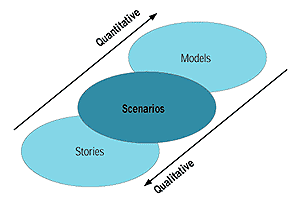
Figure 2.10: Schematic illustration of alternative scenario formulations
ranging from narrative storylines to quantitative formal models (source:
Nakicenovic et al., 2000).
This section reviews two scenario literatures. One is the SRES, which reports on the development of multiple GHG emissions baselines based on different future world views, and the other is the post-SRES literature, which involves the quantification of mitigation scenarios based on the new SRES baseline scenarios.
First, the reference scenarios are reviewed, namely the SRES GHG emissions scenarios. These are “reference” scenarios in the sense that they describe future emissions in the absence of specific new policies to mitigate climate change. The new scenarios are published as the Special Report on Emissions Scenarios (SRES) by the IPCC (Nakicenovic et al., 2000).
A key feature of the SRES process was that different methodological approaches and models were used to develop the scenarios. Another was that an “open process” was used to develop the scenarios through which researchers and other interest groups throughout the world could review and comment on the SRES scenarios as they were being developed. The SRES also aimed at improving the process of scenario development by extensively documenting the inputs and assumptions of the SRES scenarios; by formulating narrative scenario storylines; by encouraging a diversity of approaches and methods for deriving scenarios; by making the scenarios from different groups more comparable, and by assessing their differences and similarities; by expanding the range of economic-development pathways, including a narrowing of the income gap between developing and industrially developed countries; by incorporating the latest information on economic restructuring throughout the world; and by examining different trends in and rates of technological change.
|
|
The basic approach of the SRES writing team was to construct scenarios that were both qualitative and quantitative. The process involved first the formulation of the qualitative scenario characteristics in the form of narrative storylines and then their quantification by six different modelling approaches. The qualitative description gives background information about the global setting of the scenarios, which can be used to assess the capability of society to adapt to and mitigate climate change, and for linking the emission scenarios with DES issues. The quantitative description of emission scenarios can be used as input to models for computing the future extent of climate change, and for assessing strategies to reduce emissions.
The relation between qualitative and quantitative scenarios can be characterized in terms of Figure 2.10.
The SRES writing team developed four scenario “families” (see Box 2.5 for an explanation of terminology used in the SRES), because an even number helps to avoid the impression that there is a “central” or “most likely” case. The scenarios cover a wide range – but not all possible futures. In particular, there are no “global disaster” scenarios. None of the scenarios include new explicit climate policies.
Each family has a unifying theme in the form of a “storyline” or narrative that describes future demographic, social, economic, technological, and policy trends. Four storylines were developed by the whole writing team that identified driving forces, key uncertainties, possible scenario families, and their logic. Six global modelling teams then quantified the storylines. The quantification consisted of first translating the storylines into a set of quantitative assumptions about the driving forces of emissions (for example, rates of change of population and size of the economy and rates of technological change). Next, these assumptions were input to six integrated, global models that computed the emissions of GHGs and sulphur dioxide (SO2). As a result, a total of 40 scenarios were produced for the four storylines. The large number of alternative scenarios showed that a single storyline could lead to a large number of feasible emission pathways.
In all, six models were used to generate the 40 scenarios that comprise the four scenario families. Six of these scenarios, which should be considered equally sound, were chosen to illustrate the whole set of scenarios. They span a wide range of uncertainty, as required by the SRES Terms of Reference. These encompass four combinations of demographic change, social and economic development, and broad technological developments, corresponding to the four families (A1, A2, B1, B2), each with an illustrative “marker” scenario. Two of the scenario groups of the A1 family (A1FI, A1T) explicitly explore energy technology developments, alternative to the “balanced” A1B group, holding the other driving forces constant, each with an illustrative scenario. Rapid growth leads to high capital turnover rates, which means that early small differences among scenarios can lead to a large divergence by 2100. Therefore, the A1 family, which has the highest rates of technological change and economic development, was selected to show this effect.
To provide a scientific foundation for the scenarios, the writing team extensively reviewed and evaluated over 400 published scenarios. Results of the review were published in the scientific literature (Alcamo and Nakicenovic, 1998), and made available to the scientific community in the form of an Internet scenario database. The background research by the six modelling teams for developing the 40 scenarios was also published in the scientific literature (Nakicenovic, 2000).
|
Box 2.5. IPCC SRES Scenario Terminology (Source: Nakicenovic et al., 2000) Model: a formal representation of a system that allows quantification
of relevant system variables. |
|
Other reports in this collection |